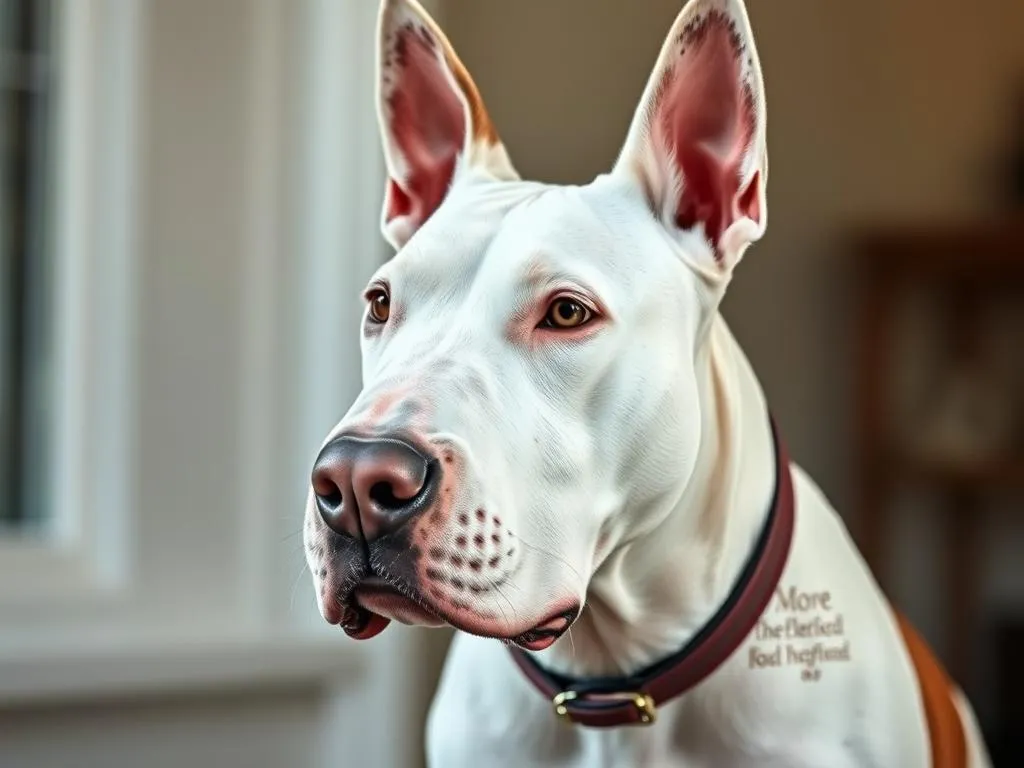
Bull Terriers, with their distinctive egg-shaped heads and playful nature, are a breed that has captured the hearts of many dog lovers. With their unique look and lively personality, they are often seen as spirited companions. Understanding their intelligence is crucial for potential owners, trainers, and enthusiasts, as it plays a significant role in how they can be trained and what behaviors can be expected.
Understanding Dog Intelligence
What is Dog Intelligence?
When we talk about dog intelligence, we refer to the ability of dogs to learn, solve problems, and adapt to different situations. Canine intelligence can be categorized into three main types:
- Instinctive Intelligence: This relates to the natural instincts of a breed, such as herding, hunting, or guarding.
- Adaptive Intelligence: This is the dog’s ability to solve problems on their own and learn from experiences.
- Working/Obedience Intelligence: This refers to how well a dog can learn commands and tasks set by humans.
How Intelligence is Measured
Assessing dog intelligence can be somewhat subjective, but various methods have been developed. Common techniques include:
- Obedience Tests: Measuring how quickly and effectively a dog responds to commands.
- Problem-Solving Tasks: Observing a dog’s ability to navigate challenges independently.
In comparison to other breeds, Bull Terriers may not always rank at the top in obedience intelligence, but their unique blend of independence and problem-solving skills showcases their intelligence in a different light.
Bull Terrier Overview
Breed Characteristics
Bull Terriers are medium-sized dogs, typically weighing between 50-70 pounds and standing about 21-22 inches tall. They have a short, dense coat that comes in a variety of colors including white, brindle, and colored patterns. Their muscular build and strong, stocky legs give them a robust appearance.
In terms of temperament, Bull Terriers are known for their playful, affectionate, and sometimes stubborn nature. They are energetic and require regular exercise and mental stimulation to remain happy.
Historical Background
Originating in the early 19th century in England, Bull Terriers were initially bred for bull-baiting, which was a popular sport at the time. After the practice was banned, they transitioned into companions and working dogs. Their history as fighting dogs has contributed to their tenacity, but with proper training and socialization, Bull Terriers can be wonderful family pets.
Bull Terriers and Intelligence
General Intelligence Ranking
In various intelligence rankings, Bull Terriers often fall somewhere in the middle. They may not be as obedient as breeds like Labrador Retrievers or Border Collies, but their intelligence shines through their adaptability and unique problem-solving abilities.
Learning Ability
When it comes to learning new commands and tricks, Bull Terriers can be quite adept. However, the retention of learned behaviors can depend on the training methods used and the consistency provided by their owners. With positive reinforcement, Bull Terriers can quickly master new skills, but they may also exhibit selective hearing if they are not fully engaged.
Behavioral Traits Influencing Intelligence
Independence vs. Obedience
Bull Terriers are known for their independent streak. This characteristic can sometimes hinder their trainability, as they may choose to ignore commands that they find uninteresting. However, understanding this trait allows owners to tailor their training methods to be more effective.
Social Intelligence
Socially, Bull Terriers excel in interacting with humans and other dogs. They have a keen ability to read human emotions and cues, which can make them fantastic companions. Their social intelligence can be a significant asset in training, as they often respond well to positive interactions with their owners.
Training Bull Terriers
Effective Training Techniques
To effectively train a Bull Terrier, several techniques can be employed:
- Positive Reinforcement: Rewarding good behavior with treats, praise, or playtime can motivate Bull Terriers to learn.
- Consistency: Establishing clear commands and maintaining consistency is crucial for their understanding.
Common mistakes to avoid include using negative reinforcement or being overly harsh during training, which can lead to fear and anxiety.
Socialization and Early Training
Early socialization is vital for Bull Terriers to develop well-rounded personalities. Introducing them to various environments, people, and other animals can help prevent behavioral issues in the future. Here are some tips for effective socialization:
- Expose them to different sights and sounds: This can include trips to parks, pet stores, or dog-friendly events.
- Encourage positive interactions: Allow your Bull Terrier to meet other dogs and people in a controlled manner to build confidence.
Challenges in Training Bull Terriers
Stubbornness and Distraction
One of the primary challenges in training Bull Terriers is their stubbornness. They may resist commands if they feel that the task is unworthy of their efforts. To overcome this, owners should implement strategies to keep training sessions engaging and fun.
Behavioral Issues
Common behavioral problems in Bull Terriers can include aggression and separation anxiety. Understanding the root causes of these behaviors can help in addressing them effectively. Intelligence plays a role here, as Bull Terriers may act out if they are bored or not mentally stimulated.
The Role of Environment in Intelligence
Mental Stimulation
Mental challenges are essential for Bull Terriers. Engaging their minds can prevent boredom and destructive behaviors. Some activities that promote cognitive development include:
- Puzzle toys: These can stimulate their problem-solving skills.
- Training sessions: Regular practice keeps their minds sharp and focused.
Physical Exercise
There is a strong correlation between physical activity and mental health in Bull Terriers. Regular exercise helps to release pent-up energy, leading to a more balanced and calm dog. Recommended exercises for Bull Terriers include:
- Daily walks: Aim for at least an hour of activity each day.
- Interactive play: Games like fetch or tug-of-war can be both entertaining and physically demanding.
Real-Life Examples
Successful Bull Terrier Owners
Many Bull Terrier owners have successfully trained their pets to be well-behaved companions. Anecdotes from these owners highlight the importance of patience, consistency, and understanding of the breed’s unique traits.
Case Studies
Bull Terriers have shown their capabilities in various roles, such as service dogs and in agility competitions. These case studies illustrate their adaptability and intelligence when provided with the right environment and training.
Conclusion
In summary, while Bull Terriers may not always top the charts in obedience intelligence, they possess a unique blend of independence, adaptability, and social intelligence that makes them exceptional companions. Understanding their intelligence and how it affects their behavior and training is crucial for potential owners. With the right approach, Bull Terriers can thrive and develop into well-trained, affectionate family members.
FAQs
Are Bull Terriers easy to train?
Training Bull Terriers can be a challenge due to their independent nature, but with consistent and positive reinforcement methods, they can learn effectively.
How smart are Bull Terriers compared to other breeds?
While Bull Terriers may not rank as high as some other breeds in obedience tests, their problem-solving skills and adaptability showcase their unique intelligence.
What are the best activities to engage a Bull Terrier’s mind?
Activities such as puzzle toys, training sessions, and interactive games are excellent for mental stimulation.
Can Bull Terriers be trained as service dogs?
Yes, with proper training and socialization, Bull Terriers can excel in various service roles, as their intelligence and social skills are beneficial.
What should I do if my Bull Terrier resists training?
If your Bull Terrier resists training, it’s important to reassess your approach. Focus on positive reinforcement, make sessions engaging, and be patient to encourage cooperation.









